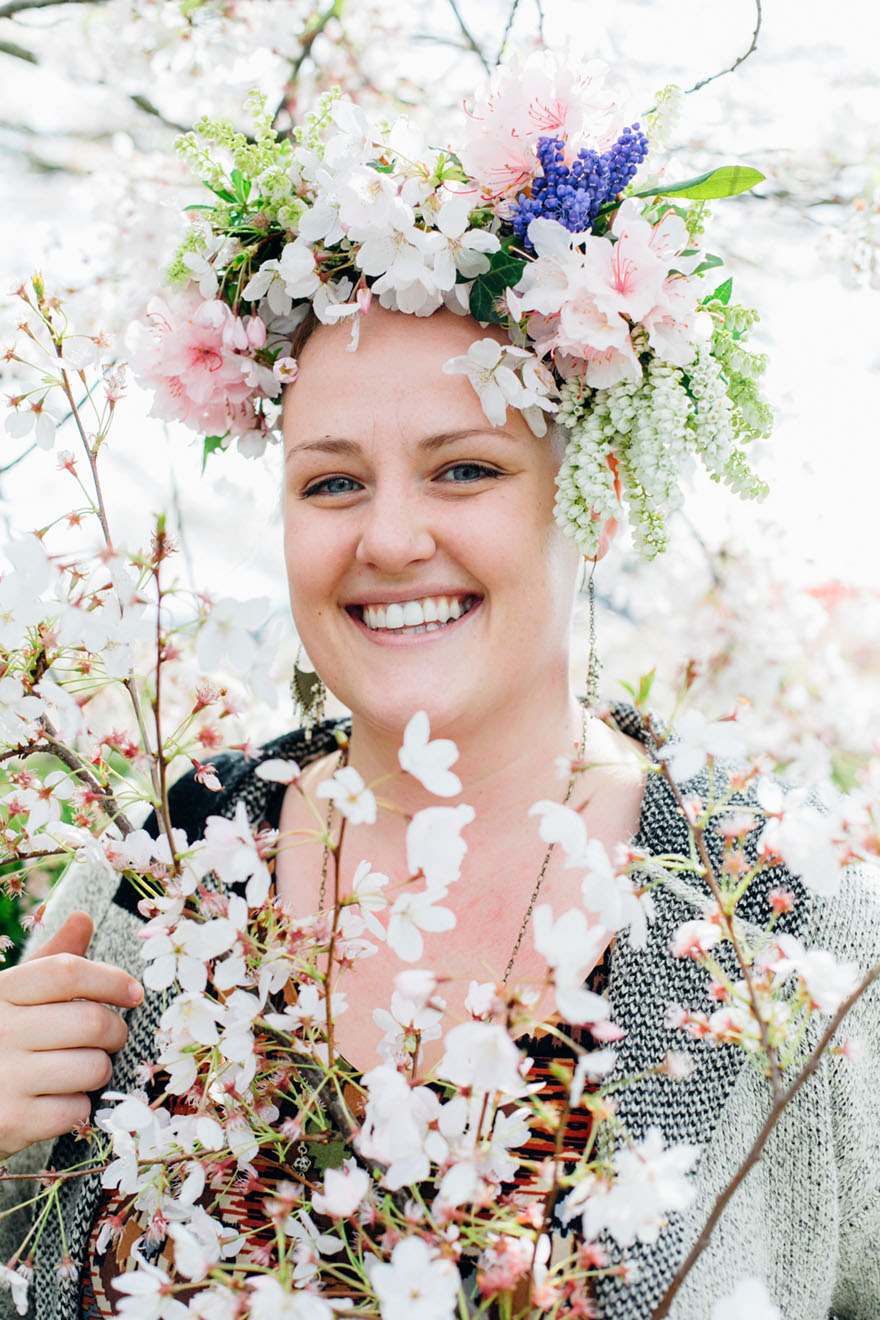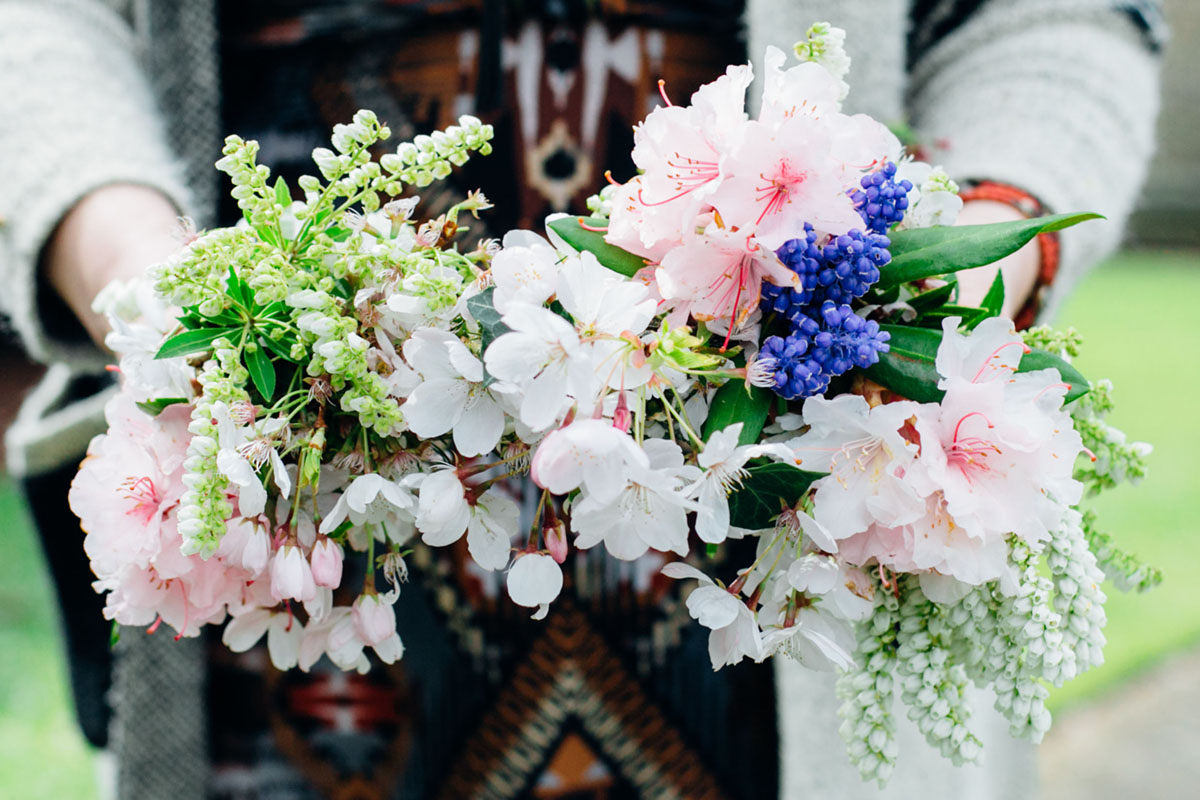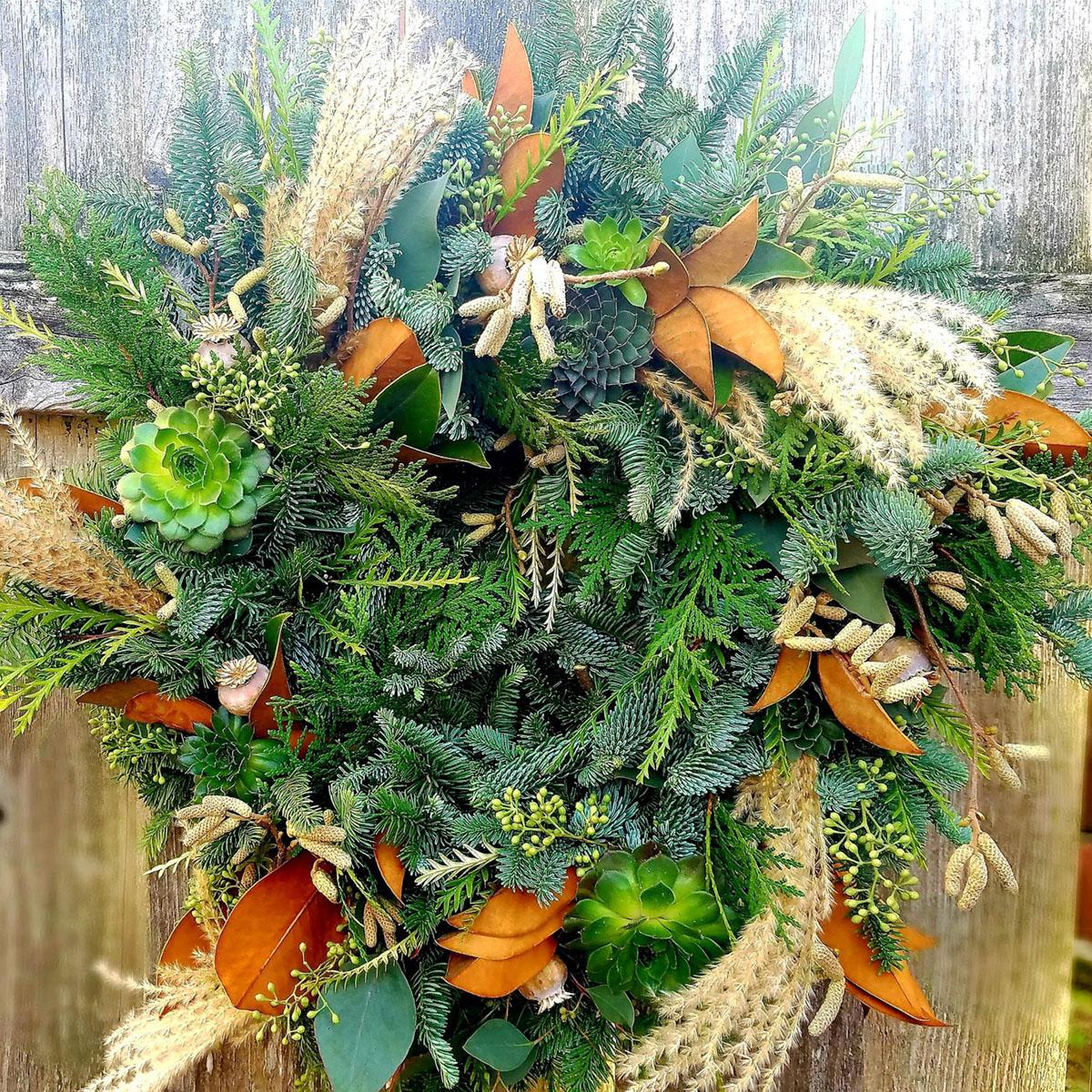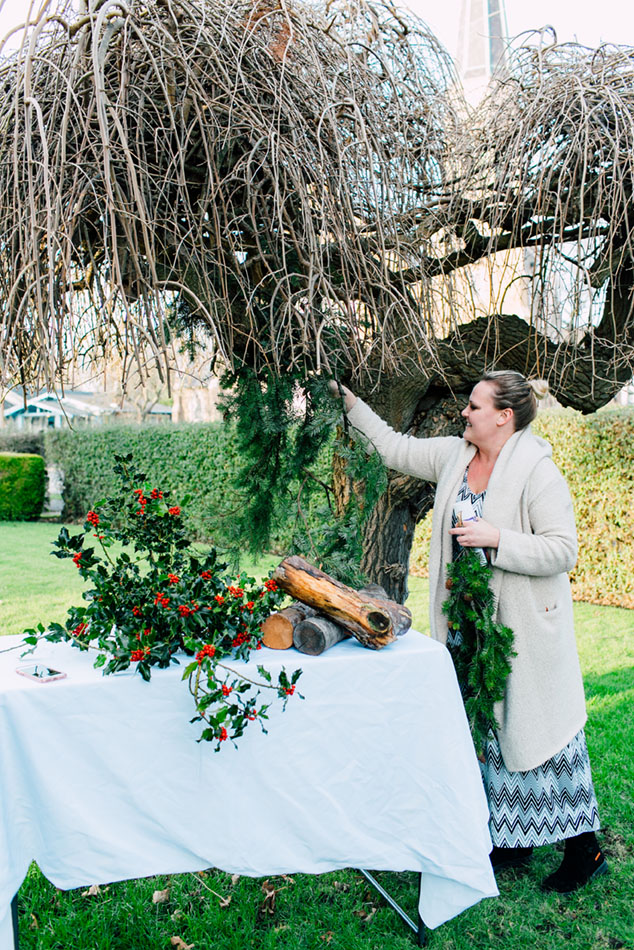
Katheryn Moran Photography
Floral designer Natalie Ransom wears a headpiece of foraged spring flowers.
Bellingham, Washington-based floral designer Natalie Ransom of Pozie by Natalie shares some of the flower foraging tips she uses to create amazing floral pieces for weddings, special events, and businesses.
“The things you see every day or have grown up around are a great place to start,” Ransom says. “You may be walking right past something that can add vibrant color, rich texture, or real meaning to your arrangement.” Whenever possible, Natalie uses flowers and plants found or cultivated in her corner of the Pacific Northwest. They’re free or less expensive, often last longer, and are better for the planet.
Ransom grew up on a farm in Michigan’s Upper Peninsula, where she learned from her father, Chip, to keep a mental list and use what’s in season.
Don’t be afraid to ask your neighbor either. “Take over some muffins and ask if you can have a few cuts from their unruly shrub. When flowers are at their peak, they need to be cut to continue to encourage new blooms, so your friends might appreciate your help keeping them fresh,” Ransom says. “You can also check in with your local gardening group, either online or in person. Nine times out of ten, they will be generous.” (Editor’s note: In this time of social distancing, call or text your neighbor for permission, and leave those thank-you muffins at the door.)
However, ask before you collect any flower or plant. Never remove them from parks or public or private property without permission.
SHOWY SPRING
Spring is heralded by colorful flowering branches like Pieris, lilac, cherry, mock cherry, camellia, pussy willow, and Chinese snowball viburnum. “Many are fragrant and have glossy foliage that lasts well,” adds Ransom. “These can be used to create minimalist yet dramatic pieces, and you only a need a few branches to make something simple and elegant.” Find more tips for arranging with branches.

Photo by Katheryn Moran
A bouncy spring arrangement of foraged Pieris, pink rhododendron, Muscari (grape hyacinth), and ornamental cherry blossoms
SIMPLY SUMMER
Because summer is the season with the largest number of blooms available, Ransom suggests exploring color combinations with multiple varieties of wildflowers from your yard. “People in our area often grow dahlias, and usually more than they know what to do with. They’re proud of their bounty, so they’re happy to share.”
A number of flowers grow trailside, so you can make a bouquet as you walk. “Be sure to leave some for others to enjoy,” Ransom says. Rudbeckia, sweet pea, hydrangea, nigella, feverfew, campanula, cosmos, and wild phlox can all be found in abundance in summer months.
Click the arrows (or swipe if on a mobile device) to see more
FABULOUS FALL
Fall is all about texture. “Add variety with non-floral elements like paper, fabric, metal, fruit, and gourds. This is also the time of year for dried plants and flowers, like pampas grass or rye.” Fall leaves and colored branches add pops of color to any arrangement. Try Pacific ninebark, dusty miller, and Chinese lanterns. “Wonderful any time of the year—but especially in fall—try arranging succulents in tiny pumpkins or adding them to a wreath,” Ransom says.

Photo by Natalie Ransom
With fall grasses, succulents, and evergreen foliage, this wreath by Natalie Ransom bridges the fall and winter seasons.
WINTER WONDERS
Even when it seems that everything is dormant or covered in snow, evergreen plants can be tapped to make holiday wreaths, centerpieces, garlands, and whatever else you can dream up. Think fir, spruce, cedar, and other non-deciduous trees and shrubs in your area.
“Evergreens come in so many different shades and textures, and some, like holly, euonymus (or spindle tree), and arborvitae, are variegated,” notes Ransom. “Don’t be afraid to try new things and experiment by mixing needled and leaved plants with other elements like cones, rose hips, and colored branches like red- and yellow-twigged dogwood and huckleberry.”
Evergreen plants also last well. “Because they’re around in the winter, they are versatile and last well whether they’re in or out of water—especially when decorating outside on stair banisters, porch railings, fencing, and patio furniture.”

Photo by Katheryn Moran

Photo by Katheryn Moran
HAVE FUN YEAR-ROUND
Expressing yourself through flower arranging is a great way to bring the spirit of the seasons into your home or office. Enjoy getting to know the plants and flowers in your surroundings and sharing their beauty with others.
“Most people know what they like and don’t like. What flowers make them happy and the memories connected to certain plants,” explains Ransom. “You know what’s working and what isn’t if you just tune in to your gut.”
Art is in the eye of the beholder, and sometimes exploring new things is what it takes to create your masterpiece. “When I work with something new, I like to do a test cutting.” Ransom suggests placing a clipping alone in water to learn more about how it changes throughout the life of an arrangement. Some flowers and foliage that appear sturdy may wilt within a couple of hours after cutting, making them unsuitable for an arrangement.

Floral design and photo by Natalie Ransom
With Ransom’s advice and a little practice, you too can forage and create stunning floral works of art with confidence all year.
For more news, web exclusives, and Flower magazine favorites in your inbox, sign up for our FREE newsletter.
READ NEXT: THE FLORAL FORAGER
Bridget Beth Collins gathers bits and pieces of plants and flowers and beautifully composes them into captivating vignettes to photograph and share with her Instagram devotees. See more.



